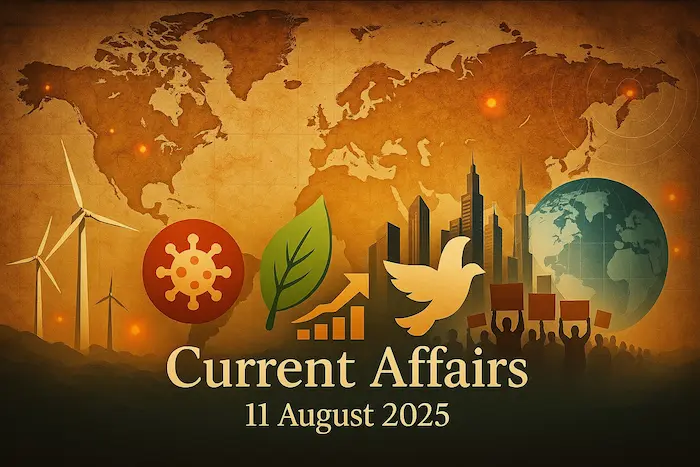1. New Rules for Organ Transplant Allocation – Prioritising Women and Donor Families – Governance
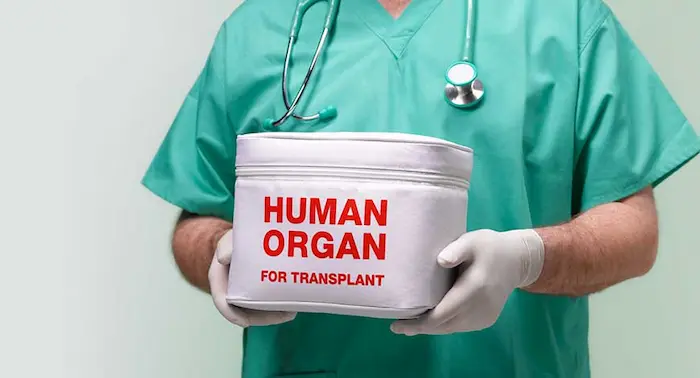
Why in News
The Union Government has revised India’s organ transplant allocation policy to give priority to women patients and immediate relatives of deceased donors, aiming to correct gender disparities and encourage more organ donations.
Background – Organ Transplant Allocation in India
- Administered by the National Organ & Tissue Transplant Organisation (NOTTO) under the Ministry of Health & Family Welfare.
- Current allocation factors include:
- Medical urgency (severity of illness)
- Wait time on transplant list
- Matching parameters (blood group, organ size, age)
- Special cases (children, re-transplants)
- Geographical proximity (for organ viability)
Key Changes in the New Rules
- Priority beneficiaries:
- Women patients on the national waiting list.
- Immediate relatives of deceased donors.
- Implementation: Additional points in allocation scoring system.
- Digital Registry Compliance: All transplant centres must submit donor–recipient data to NOTTO; non-compliance may invite legal action.
Rationale for the Changes
- Gender Disparity
- Women historically underrepresented among transplant recipients due to:
- Socio-economic disadvantage.
- Cultural bias prioritising male family members’ treatment.
- Women historically underrepresented among transplant recipients due to:
- Encouraging Donations
- Recognition for donor families aims to boost cadaveric organ donation rates, currently low in India (~0.8 donors per million population).
Significance of the Reform
- Equity & Inclusion: Integrates social justice into medical prioritisation.
- Transparency: Clear rules reduce scope for favouritism in allocation.
- Public Trust: Incentivises organ donation through acknowledgement of donor families.
- Health Impact: May improve gender balance among transplant recipients.
Challenges Ahead
- Ensuring hospitals comply with registry and reporting norms.
- Addressing ethical debates over prioritising by gender or donor relationship.
- Improving public awareness to overcome cultural hesitation about organ donation.
Exam Connect – Possible Questions
Prelims
1. Consider the following statements about NOTTO:
1.It works under the Ministry of Health and Family Welfare.
2. It is responsible for maintaining the national registry of organ donors and recipients.
3. It decides the legal age for organ donation in India.
Which of the statements given above is/are correct?
A.1 and 2 only
B. 2 and 3 only
C. 1 only
D. 1, 2 and 3
Answer: A.1 and 2 only
Explanation: NOTTO is under the Health Ministry and maintains the national registry; legal age is governed by the Transplantation of Human Organs and Tissues Act, not decided solely by NOTTO.
2. Which of the following is NOT a factor considered in organ allocation under the new guidelines?
A. Medical urgency
B. Blood group compatibility
C. Annual income of patient
D. Geographical proximity
Answer: C. Annual income of patient
Explanation: Income is not a factor in allocation criteria.
Mains
- Discuss the significance of the recent reforms in organ transplant allocation policy in India, particularly in addressing gender disparity and promoting organ donation.
- Critically evaluate the ethical and administrative challenges that may arise from prioritising organ allocation for women and donor families. Suggest measures to ensure fairness and transparency.
2. Decline of Maoist Insurgency in the Red Corridor – Polity

Why in News
The Maoist insurgency, once spread across nearly 180 districts in the late 2000s, has now shrunk to 18 districts. The decline is linked to sustained counterinsurgency, targeted development, leadership crises, internal rifts, and loss of local support.
Background – Left-Wing Extremism (LWE)
- Also known as Naxalism, inspired by Maoist ideology.
- Roots in the Naxalbari movement, 1967 (West Bengal).
- Aimed at overthrowing the state through armed struggle, citing socio-economic inequalities.
- Historically active in Chhattisgarh, Jharkhand, Odisha, Maharashtra, Andhra Pradesh and parts of Bihar, West Bengal.
Statistical Decline
- Geographic Spread: From ~180 districts → now 18 (2025).
- Incidents: Down by 50% between 2004–14 and 2014–23.
- Fatalities: Down nearly 70% in the same period.
Reasons for Decline
- Government Action
- Targeted development schemes in affected districts.
- Sustained counterinsurgency operations by CRPF, state police, CoBRA units.
- Organisational Weakness
- Leadership crisis:
- Resignation of Muppala Lakshmana Rao (Ganapathy) – 2018.
- Death of successor Basava Raju – 2025.
- Politburo reduced to only four active members.
- Leadership crisis:
- Internal Divisions
- Factionalism weakening central decision-making.
- Loss of Local Support
- Overemphasis on military actions, neglecting community welfare.
- Shift in local aspirations toward education, jobs, and infrastructure.
Challenges Ahead
- Residual Pockets: Remaining districts still face security and governance gaps.
- Urban Naxalism: Ideological and academic support in cities sustains recruitment and propaganda.
- Underlying Causes: Land alienation, tribal rights, poverty, and governance deficits remain in some areas.
Government’s Target
- Complete elimination by 31 March 2026.
- Strategy must combine security measures with socio-economic reforms for lasting peace.
Exam Connect – Possible Questions
Prelims
1. Which of the following states have historically been part of India’s “Red Corridor”?
1. Chhattisgarh
2. Jharkhand
3. Odisha
4. Gujarat
Select the correct answer using the code given below:
A. 1 and 2 only
B. 1, 2 and 3 only
C. 2, 3 and 4 only
D. 1, 2, 3 and 4
Answer: B. 1, 2 and 3 only
2. The elite CoBRA force is primarily tasked with:
A. Combating insurgency in Jammu & Kashmir
B. Counter-insurgency operations against Maoists
C. Protecting India’s maritime borders
D. Anti-hijacking operations at airports
Answer: B. Counter-insurgency operations against Maoists
Mains
1. “The decline of Left-Wing Extremism in India is as much a governance success as it is a security achievement.” Discuss with reference to recent trends in the Red Corridor.
2. Suggest a multi-pronged strategy to ensure the complete and lasting eradication of Maoist insurgency while addressing its socio-economic root causes.
3. Master of Roster – SC vs HC: Judicial Authority and Limits of Intervention – Polity
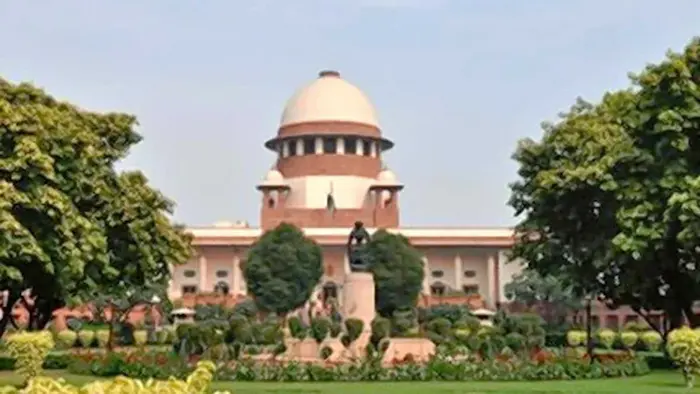
Why in News?
- The Supreme Court (SC) recently reprimanded an Allahabad High Court (HC) judge for an “absurd” order, sparking debate on SC’s power to intervene in HC administrative matters.
- Controversy centered on the ‘Master of Roster’ authority — the Chief Justice of a High Court’s exclusive right to allocate judicial work.
Background of the Case
- Incident: SC Bench (Justices J.B. Pardiwala & R. Mahadevan) ordered Justice Prashant Kumar of Allahabad HC to be removed from the criminal roster and work with a senior judge until retirement.
- Reaction: HC lawyers and Chief Justice Arun Bhansali raised concerns over SC interference in roster allocation — traditionally the sole domain of the HC Chief Justice.
- Aftermath: Following a letter from CJI B.R. Gavai, SC clarified its order, stating it did not intend to override ‘Master of Roster’ authority.
Constitutional & Judicial Principles Involved
A. Master of the Roster Principle
- Definition: Exclusive authority of the Chief Justice (SC or HC) to constitute benches and allocate cases.
- Key Judgments:
- State of Rajasthan vs. Prakash Chand (1998) – Only the CJ can decide which judge hears which case.
- State of Rajasthan vs. Devi Dayal (1959) – CJ decides composition of benches.
- Mayavaram Financial Corporation vs. Registrar of Cooperative Societies (Madras HC, 1991) – CJ has inherent powers for allocation of judicial business.
B. SC’s Constitutional Powers
- Article 141 – Law declared by SC is binding on all courts.
- Article 142 – SC may pass any order necessary for “complete justice” in any matter.
C. Judicial Independence vs. Oversight
- High Courts are independent constitutional bodies.
- However, India’s judiciary is integrated and hierarchical, allowing SC oversight in exceptional cases affecting the rule of law.
Issues Raised
- Scope of SC’s Powers: Can SC issue administrative instructions to a HC CJ?
- Judicial Discipline vs. Autonomy: Ensuring quality without micromanaging HC functioning.
- Article 142 Justification: Is corrective action permissible without formal misconduct proceedings?
- Separation of Powers within Judiciary: Balancing hierarchy and autonomy.
In-House Mechanism vs. Public Reprimand
- Formal process for serious misconduct: Impeachment via Parliament.
- Lesser issues: Addressed through confidential in-house inquiries.
- SC’s Approach here: Public directive (removal from criminal roster, mentorship pairing).
Way Forward
- Formulate clear guidelines for SC intervention in HC administration.
- Strengthen in-house mechanisms to resolve judicial conduct issues discreetly.
- Introduce mentorship and continuous judicial training programs to reduce errors in sensitive cases.
Exam Connect – Possible Questions
Prelims
1. Consider the following statements about the ‘Master of Roster’ principle:
1. It grants the Chief Justice exclusive authority to decide bench composition and case allocation.
2. It applies only to the Supreme Court, not High Courts.
3. The principle has been affirmed by the Supreme Court in State of Rajasthan vs. Prakash Chand (1998).
Which of the statements given above is/are correct?
A. 1 and 3 only
B. 2 and 3 only
C. 1 only
D. 1, 2 and 3
Answer: A. 1 and 3 only
Explanation: Statement 1 and 3 are correct; statement 2 is incorrect because it applies to both SC and HCs.
2. Under which Article of the Constitution can the Supreme Court pass any order necessary for “complete justice” in a case?
A. Article 136
B. Article 141
C. Article 142
D. Article 144
Answer: C. Article 142
Explanation: Article 142 empowers the SC to do “complete justice” in any matter.
Mains
1. Discuss the scope and limitations of the Supreme Court’s power to intervene in the administrative functions of High Courts in light of the ‘Master of Roster’ principle.
2. Judicial independence must be balanced with institutional accountability. Examine this statement in the context of the recent SC–HC controversy over roster allocation.
4. Swadeshi Movement and Self-Reliant India – History & Culture
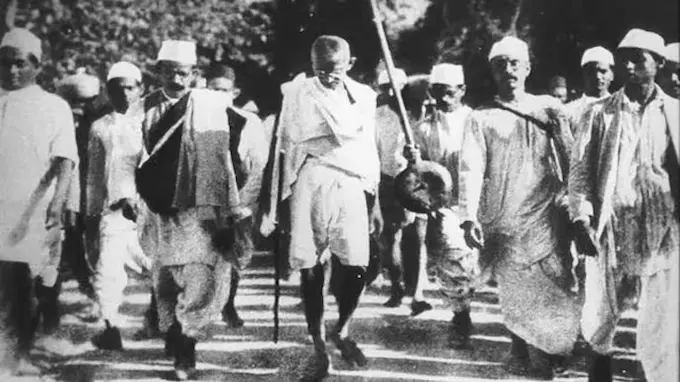
Why in News?
- National Handloom Day is celebrated annually on 7 August to commemorate the launch of the Swadeshi Movement in 1905, which promoted indigenous industries as an economic resistance to British rule.
- Declared officially by the Government of India in 2015 to honour the handloom community.
- Theme for 2025: “Weaving Innovation into Tradition.”
Swadeshi Movement – Background
- Trigger: Partition of Bengal in 1905 by Lord Curzon — seen as an attempt to divide Bengal on religious lines.
- Other Causes: Curzon’s repressive measures (Indian Universities Act 1904, Calcutta Corporation reforms).
- Launch: August 1905 meeting at Calcutta Town Hall.
- Initial Call: Boycott of British goods (Manchester cloth, Liverpool salt) and promotion of Indian-made products.
Key Features & Methods
- Boycott of British goods and support for local industries.
- National Education: Establishment of national schools (e.g., Bengal National College, Bengal Technical Institute).
- Formation of Samitis: Volunteer organisations like Swadesh Bandhab Samiti (Ashwini Kumar Dutta, Barisal).
- Use of Festivals: Ganapati & Shivaji festivals; Tagore’s Raksha Bandhan to promote unity.
- Social Reform Linkage: Promotion of Atma Shakti — self-strength tied to social reforms.
Phases of the Movement
- Moderate Phase: Petitions, meetings; leaders like Surendranath Banerjee.
- Radical Phase: Lal-Bal-Pal trio (Bipin Chandra Pal, Lala Lajpat Rai, Bal Gangadhar Tilak) — call for Swaraj, boycott of British institutions, passive resistance, and armed struggle.
Impact
- On INC: 1906 Calcutta session under Dadabhai Naoroji — Swaraj declared as goal. Party split in 1907 (Surat Session) between Moderates & Extremists.
- On Society & Culture: Tagore’s Amar Sonar Bangla became Bangladesh’s national anthem; Indian art flourished.
- On British Rule: Decline in imports (1905–1908); led to Morley-Minto Reforms 1909; annulment of Bengal partition in 1911.
- On Industry: Rise of Indian enterprises like Bengal Chemicals, Lakshmi Cotton Mills.
Contemporary Relevance
- Atmanirbhar Bharat: Promotes local for global and vocal for local.
- Make in India: Global manufacturing hub, increased FDI, defence export growth.
- PLI Schemes: Boosts domestic manufacturing in 14 sectors.
- Khadi & Cottage Industries Revival: KVIC growth in production, sales, employment.
- Economic Nationalism: Import substitution, trade tariffs, strategic sector focus.
Exam Connect – Possible Questions
Prelims
1. Consider the following statements regarding the Swadeshi Movement:
1. It was formally launched in Calcutta in 1905 after the Partition of Bengal.
2. The Lal-Bal-Pal trio were associated with its radical phase.
3. Amar Sonar Bangla was composed during this movement and is now the national anthem of Bangladesh.
Which of the statements given above is/are correct?
A.1 and 2 only
B. 2 and 3 only
C. 1 and 3 only
D. 1, 2 and 3
Answer: D. 1, 2 and 3
Explanation: All three statements are correct — the movement started after Bengal’s partition (1905), had radical leaders (Lal-Bal-Pal), and inspired Tagore’s composition which is now Bangladesh’s anthem.
2. Which of the following contemporary initiatives best reflects the Swadeshi principle of promoting indigenous industries?
A. GST implementation
B. Atmanirbhar Bharat Abhiyan
C. Smart Cities Mission
D. National Monetisation Pipeline
Answer: B. Atmanirbhar Bharat Abhiyan
Explanation: Atmanirbhar Bharat emphasises self-reliance and promotion of domestic industries, echoing the Swadeshi philosophy.
Mains
1. “The Swadeshi Movement was not just an economic boycott, but a cultural and social renaissance.” Discuss with reference to its methods and impact.
2. Examine the relevance of Swadeshi principles in India’s present-day economic policies such as Atmanirbhar Bharat and Production Linked Incentive schemes.
5. RBI’s Recommendations on Liquidity Management Framework (LMF) – Economy
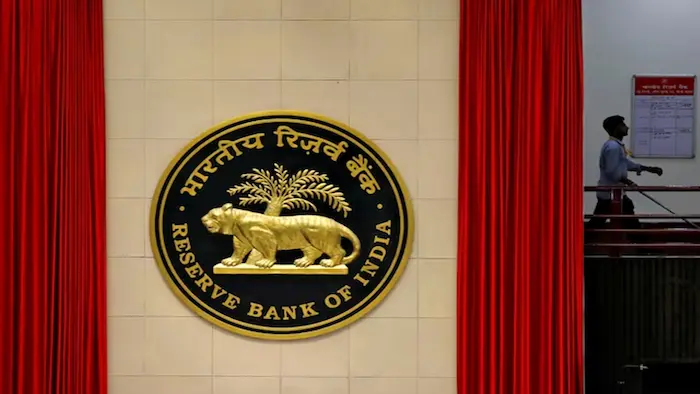
Why in News?
- RBI’s Internal Working Group (IWG) has suggested changes to improve efficiency and predictability in the Liquidity Management Framework (LMF), operational since February 2020.
What is the Liquidity Management Framework?
A. Overview
- LMF is RBI’s toolkit to manage cash levels in the banking system.
- Ensures smooth short-term interest rate guidance and monetary policy transmission.
B. Core Mechanism: Liquidity Adjustment Facility (LAF)
- Repo Rate: RBI lends to banks.
- Reverse Repo Rate: RBI absorbs liquidity from banks.
- Operates via a corridor system — policy repo rate in the middle, with the Weighted Average Call Rate (WACR) as the target.
C. Additional Instruments
- Open Market Operations (OMO) – buying/selling government securities.
- Cash Reserve Ratio (CRR) – proportion of deposits banks must keep with RBI.
- Statutory Liquidity Ratio (SLR) – mandated investment in approved securities.
Key Recommendations by IWG
| Recommendation | Details | Rationale |
|---|---|---|
| Continue WACR as operating target | Overnight WACR remains main target for monetary policy. | WACR closely tracks other short-term rates → effective for policy transmission. |
| Discontinue 14-day VRR/VRRR as primary tools | Stop using 14-day Variable Rate Repo/Reverse Repo for transient liquidity. | Low participation; preference for shorter-term tools. |
| Shift to shorter-term operations | Use 7-day repo/reverse repo and operations from overnight to 14 days. | More flexible; reduces market disruptions. |
| Advance notice for operations | At least one day’s notice for repo/reverse repo. | Reduces uncertainty; stabilizes rates. |
| Maintain 90% minimum CRR requirement | Daily minimum CRR compliance at 90%. | Prevents liquidity shortfalls; ensures reserve adequacy. |
Significance of Recommendations
- For Policy Transmission: Keeps money market rates aligned with repo rate.
- For Banks: Greater predictability → better liquidity planning.
- For Economy: Reduces volatility in short-term interest rates → improves lending and borrowing conditions.
Exam Connect – Possible Questions
Prelims
1. In the context of RBI’s Liquidity Management Framework, the term “WACR” refers to:
A. Weighted Average Collateral Ratio
B. Weighted Average Cash Reserve
C. Weighted Average Call Rate
D. Weighted Annual Credit Ratio
Answer: C. Weighted Average Call Rate
Explanation: WACR = Weighted Average Call Rate, the operating target for monetary policy under LMF.
2. Which of the following are tools under RBI’s Liquidity Adjustment Facility (LAF)?
1. Repo
2. Reverse Repo
3. Statutory Liquidity Ratio (SLR)
Select the correct answer:
A. 1 only
B.1 and 2 only
C. 2 and 3 only
D. 1, 2 and 3
Answer: B.1 and 2 only
Explanation: LAF includes repo and reverse repo; SLR is a separate statutory requirement, not part of LAF.
Mains
1. Discuss the role of the Liquidity Management Framework in monetary policy transmission. How will the recent RBI recommendations improve its efficiency?
2. Explain the significance of WACR as the operating target in India’s money market operations. How does it compare with other short-term interest rate measures?
6. How AI is Transforming India’s IT Industry – Economy

Why in News?
- Tata Consultancy Services (TCS) has frozen experienced hiring and cut ~12,000 jobs.
- Reflects a sector-wide pivot in India’s $280 billion IT industry (employing 5.8 million people) towards AI-driven models.
Key Highlights
A. AI’s Role in Efficiency
- AI tools (e.g., coding assistants, intelligent debuggers) increase productivity by 30%+ in testing & maintenance.
- Minimize human error and enhance accuracy.
B. Global AI Landscape
- Projected investment: Over $1 trillion by 2025.
- Challenges: outdated infrastructure, poor data quality, compliance issues.
C. Opportunity for Indian IT Firms
- Expertise in data organization and compliant AI solutions for global clients.
- Shift from large coding teams to specialized tech experts.
Implications for Jobs
- Disruption: Automation reduces demand for repetitive coding roles.
- Creation: New roles in AI engineering, data science, cybersecurity, compliance.
- Essential Skill Shift: Continuous upskilling in emerging tech becomes critical.
Strategic Significance
- Reinforces India’s position as a global tech solutions hub.
- Aligns with Digital India, AI for All, and global AI ethics debates.
- Encourages transition to high-value service offerings.
Way Forward
- National AI skilling programs for IT workforce.
- Strengthen AI research hubs in partnership with academia.
- Develop AI regulatory frameworks to ensure ethical adoption.
Exam Connect – Possible Questions
Prelims
1. In the context of India’s IT sector, which of the following are examples of AI-driven productivity tools?
1. Coding assistants
2. Intelligent debuggers
3. Open Market Operations
Select the correct answer:
A. 1 only
B. 1 and 2 only
C. 2 and 3 only
D. 1, 2 and 3
Answer: B. 1 and 2 only
Explanation: AI tools like coding assistants and intelligent debuggers enhance software development; Open Market Operations relate to RBI’s monetary policy.
2. As per recent trends, which of the following statements about AI in India’s IT industry is correct?
A. AI adoption reduces the need for upskilling.
B. Indian IT firms are focusing on large coding teams for efficiency.
C. AI adoption is expected to increase demand for specialized tech expertise.
D. Global AI investments are projected to decline by 2025.
Answer: C. AI adoption is expected to increase demand for specialized tech expertise.
Explanation: AI shifts focus from large coding teams to specialized experts; upskilling is essential, and global AI investments are rising.
Mains
1. Discuss the potential impacts of AI adoption on employment patterns in India’s IT industry. How can policy and industry collaboration ensure a smooth transition?
2. AI is both a disruptor and an enabler for India’s IT sector. Analyse this statement with reference to efficiency, innovation, and global competitiveness.

